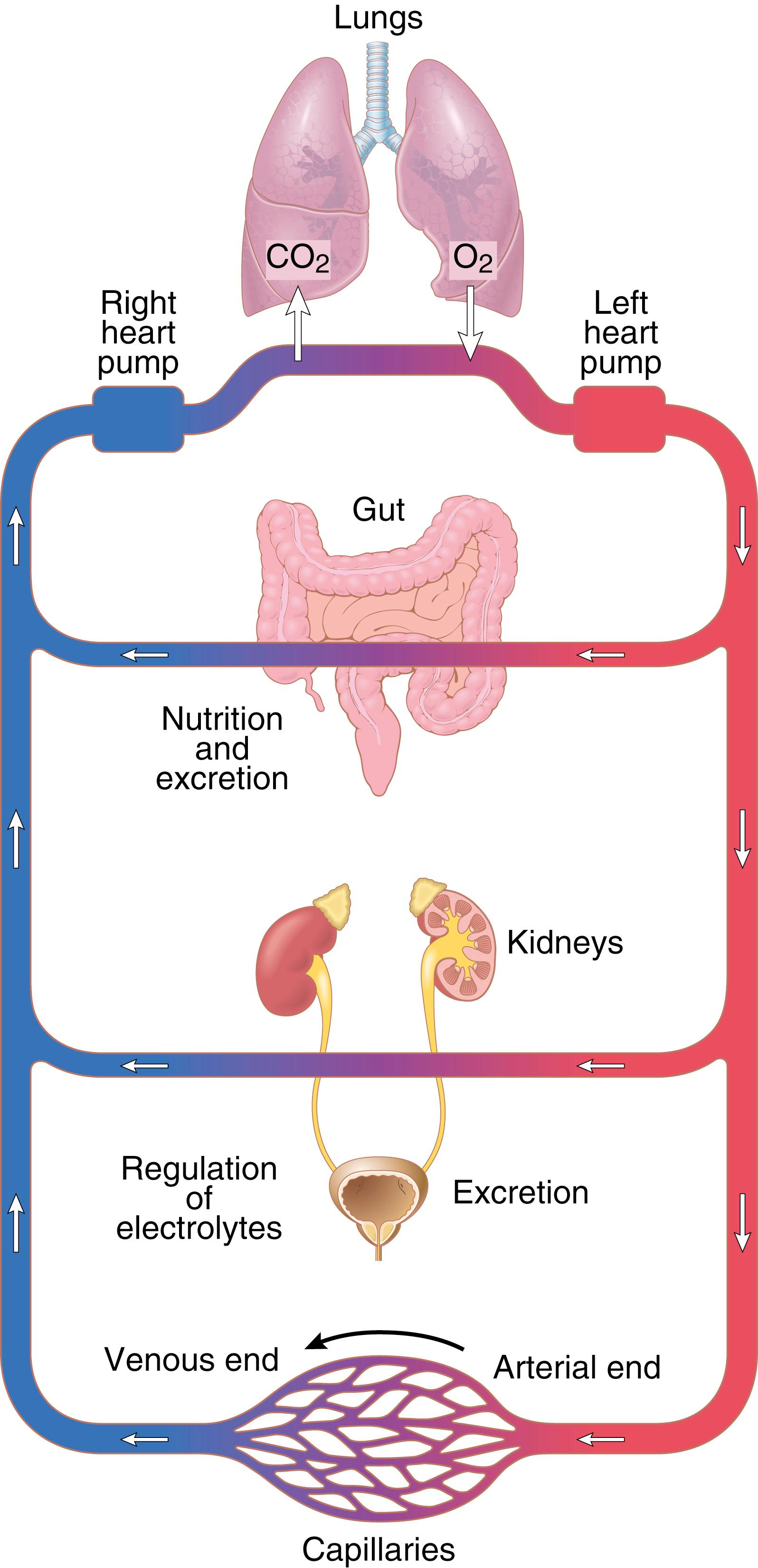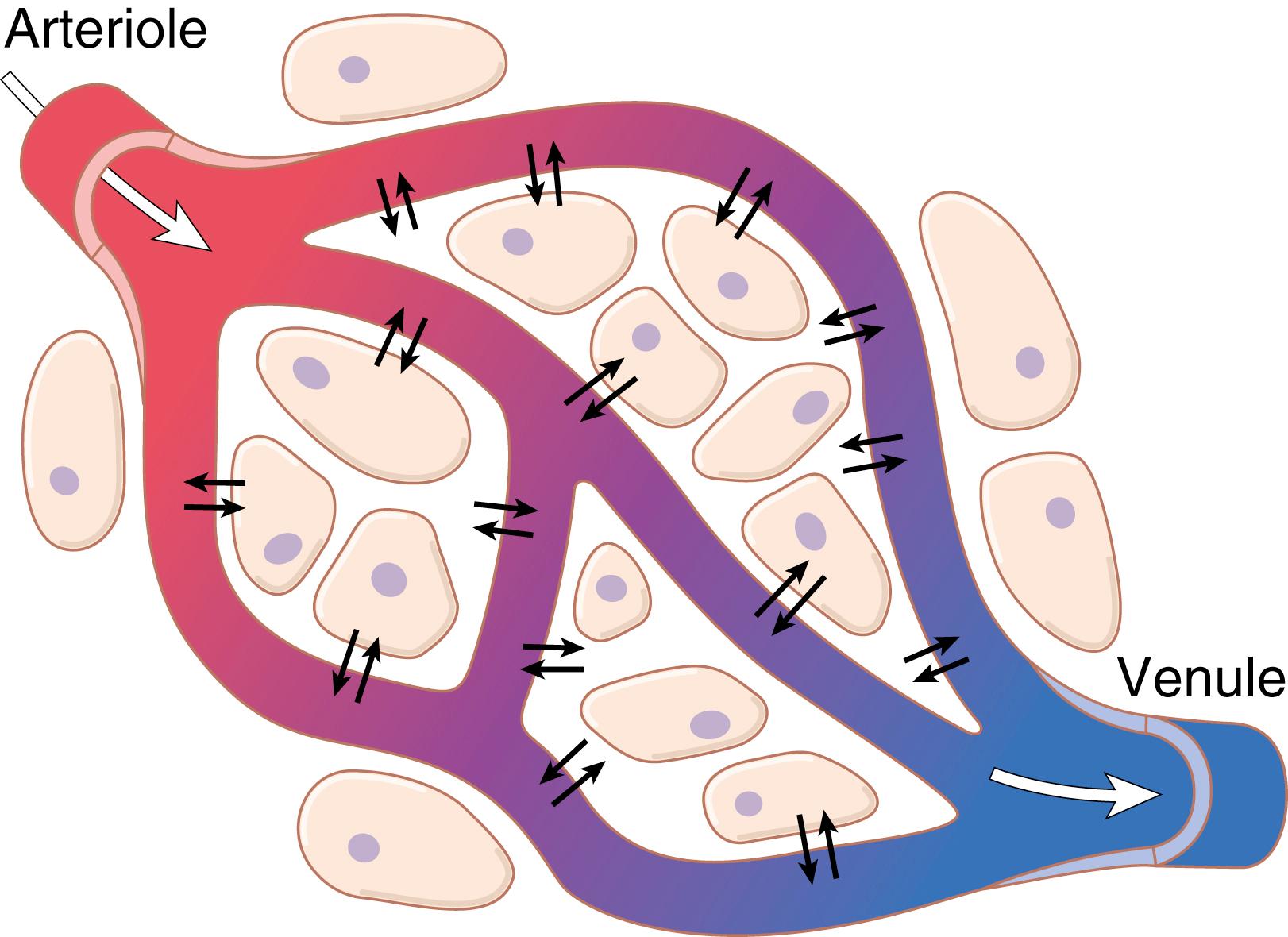Physical Address
304 North Cardinal St.
Dorchester Center, MA 02124
Physiology is the science that seeks to explain the physical and chemical mechanisms that are responsible for the origin, development, and progression of life. Each type of life, from the simplest virus to the largest tree or the complicated human being, has its own functional characteristics. Therefore, the vast field of physiology can be divided into viral physiology, bacterial physiology, cellular physiology, plant physiology, invertebrate physiology, vertebrate physiology, mammalian physiology, human physiology, and many more subdivisions.
The science of human physiology attempts to explain the specific characteristics and mechanisms of the human body that make it a living being. The fact that we remain alive is the result of complex control systems. Hunger makes us seek food, and fear makes us seek refuge. Sensations of cold make us look for warmth. Other forces cause us to seek fellowship and to reproduce. The fact that we are sensing, feeling, and knowledgeable beings is part of this automatic sequence of life; these special attributes allow us to exist under widely varying conditions that otherwise would make life impossible.
Human physiology links the basic sciences with medicine and integrates multiple functions of the cells, tissues, and organs into the functions of the living human being. This integration requires communication and coordination by a vast array of control systems that operate at every level—from the genes that program synthesis of molecules to the complex nervous and hormonal systems that coordinate functions of cells, tissues, and organs throughout the body. Thus, the coordinated functions of the human body are much more than the sum of its parts, and life in health, as well as in disease states, relies on this total function. Although the main focus of this book is on normal human physiology, we will also discuss, to some extent, pathophysiology, which is the study of disordered body function and the basis for clinical medicine.
The basic living unit of the body is the cell. Each tissue or organ is an aggregate of many different cells held together by intercellular supporting structures.
Each type of cell is specially adapted to perform one or a few particular functions. For example, the red blood cells, numbering about 25 trillion in each person, transport oxygen from the lungs to the tissues. Although the red blood cells are the most abundant of any single type of cell in the body, there are also trillions of additional cells of other types that perform functions different from those of the red blood cell. The entire body, then, contains about 35 to 40 trillion human cells.
The many cells of the body often differ markedly from one another but all have certain basic characteristics that are alike. For example, oxygen reacts with carbohydrate, fat, and protein to release the energy required for all cells to function. Furthermore, the general chemical mechanisms for changing nutrients into energy are basically the same in all cells, and all cells deliver products of their chemical reactions into the surrounding fluids.
Almost all cells also have the ability to reproduce additional cells of their own type. Fortunately, when cells of a particular type are destroyed, the remaining cells of this type usually generate new cells until the supply is replenished.
In addition to human cells, trillions of microbes inhabit the body, living on the skin and in the mouth, gut, and nose. The gastrointestinal tract, for example, normally contains a complex and dynamic population of 400 to 1000 species of microorganisms that outnumber our human cells. Communities of microorganisms that inhabit the body, often called microbiota, can cause diseases, but most of the time they live in harmony with their human hosts and provide vital functions that are essential for survival of their hosts. Although the importance of gut microbiota in the digestion of foodstuffs is widely recognized, additional roles for the body’s microbes in nutrition, immunity, and other functions are just beginning to be appreciated and represent an intensive area of biomedical research.
About 50% to 70% of the adult human body is fluid, mainly a water solution of ions and other substances. Although most of this fluid is inside the cells and is called intracellular fluid, about one-third is in the spaces outside the cells and is called extracellular fluid. This extracellular fluid is in constant motion throughout the body. It is transported rapidly in the circulating blood and then mixed between the blood and tissue fluids by diffusion through the capillary walls.
In the extracellular fluid are the ions and nutrients needed by the cells to maintain life. Thus, all cells live in essentially the same environment—the extracellular fluid. For this reason, the extracellular fluid is also called the internal environment of the body, or the milieu intérieur, a term introduced by the great 19th-century French physiologist Claude Bernard (1813–1878).
Cells are capable of living and performing their special functions as long as the proper concentrations of oxygen, glucose, different ions, amino acids, fatty substances, and other constituents are available in this internal environment.
The extracellular fluid contains large amounts of sodium, chloride, and bicarbonate ions plus nutrients for the cells, such as oxygen, glucose, fatty acids, and amino acids. It also contains carbon dioxide that is being transported from the cells to the lungs to be excreted, plus other cellular waste products that are being transported to the kidneys for excretion.
The intracellular fluid contains large amounts of potassium, magnesium, and phosphate ions instead of the sodium and chloride ions found in the extracellular fluid. Special mechanisms for transporting ions through the cell membranes maintain the ion concentration differences between the extracellular and intracellular fluids. These transport processes are discussed in Chapter 4 .
In 1929, the American physiologist Walter Cannon (1871–1945) coined the term homeostasis to describe the maintenance of nearly constant conditions in the internal environment . Essentially, all organs and tissues of the body perform functions that help maintain these relatively constant conditions. For example, the lungs provide oxygen to the extracellular fluid to replenish the oxygen used by the cells, the kidneys maintain constant ion concentrations, and the gastrointestinal system provides nutrients while eliminating waste from the body.
The various ions, nutrients, waste products, and other constituents of the body are normally regulated within a range of values, rather than at fixed values. For some of the body’s constituents, this range is extremely small. Variations in the blood hydrogen ion concentration, for example, are normally less than 5 nanomoles/L (0.000000005 moles/L). The blood sodium concentration is also tightly regulated, normally varying only a few millimoles per liter, even with large changes in sodium intake, but these variations of sodium concentration are at least 1 million times greater than for hydrogen ions.
Powerful control systems exist for maintaining concentrations of sodium and hydrogen ions, as well as for most of the other ions, nutrients, and substances in the body at levels that permit the cells, tissues, and organs to perform their normal functions, despite wide environmental variations and challenges from injury and diseases.
Much of this text is concerned with how each organ or tissue contributes to homeostasis. Normal body functions require integrated actions of cells, tissues, organs, and multiple nervous, hormonal, and local control systems that together contribute to homeostasis and good health.
Disease is often considered to be a state of disrupted homeostasis. However, even in the presence of disease, homeostatic mechanisms continue to operate and maintain vital functions through multiple compensations. In some cases, these compensations may lead to major deviations of the body’s functions from the normal range, making it difficult to distinguish the primary cause of the disease from the compensatory responses. For example, diseases that impair the kidneys’ ability to excrete salt and water may lead to high blood pressure, which initially helps return excretion to normal so that a balance between intake and renal excretion can be maintained. This balance is needed to maintain life, but, over long periods of time, the high blood pressure can damage various organs, including the kidneys, causing even greater increases in blood pressure and more renal damage. Thus, homeostatic compensations that ensue after injury, disease, or major environmental challenges to the body may represent trade-offs that are necessary to maintain vital body functions but, in the long term, contribute to additional abnormalities of body function. The discipline of pathophysiology seeks to explain how the various physiological processes are altered in diseases or injury.
This chapter outlines the different functional systems of the body and their contributions to homeostasis. We then briefly discuss the basic theory of the body’s control systems that allow the functional systems to operate in support of one another.
Extracellular fluid is transported through the body in two stages. The first stage is movement of blood through the body in the blood vessels. The second is movement of fluid between the blood capillaries and the intercellular spaces between the tissue cells.
Figure 1-1 shows the overall circulation of blood. All the blood in the circulation traverses the entire circuit an average of once each minute when the body is at rest and as many as six times each minute when a person is extremely active.

As blood passes through blood capillaries, continual exchange of extracellular fluid occurs between the plasma portion of the blood and the interstitial fluid that fills the intercellular spaces. This process is shown in Figure 1-2 . The capillary walls are permeable to most molecules in the blood plasma, with the exception of plasma proteins, which are too large to pass through capillaries readily. Therefore, large amounts of fluid and its dissolved constituents diffuse back and forth between the blood and the tissue spaces, as shown by the arrows in Figure 1-2 .

This process of diffusion is caused by kinetic motion of the molecules in the plasma and the interstitial fluid. That is, the fluid and dissolved molecules are continually moving and bouncing in all directions in the plasma and fluid in the intercellular spaces, as well as through capillary pores. Few cells are located more than 50 micrometers from a capillary, which ensures diffusion of almost any substance from the capillary to the cell within a few seconds. Thus, the extracellular fluid everywhere in the body—both that of the plasma and that of the interstitial fluid—is continually being mixed, thereby maintaining homogeneity of extracellular fluid throughout the body.
Figure 1-1 shows that each time blood passes through the body, it also flows through the lungs. The blood picks up oxygen in alveoli, thus acquiring the oxygen needed by cells. The membrane between the alveoli and the lumen of the pulmonary capillaries, the alveolar membrane, is only 0.4 to 2.0 micrometers thick, and oxygen rapidly diffuses by molecular motion through this membrane into the blood.
A large portion of the blood pumped by the heart also passes through the walls of the gastrointestinal tract. Here different dissolved nutrients, including carbohydrates, fatty acids, and amino acids, are absorbed from ingested food into the extracellular fluid of the blood.
Not all substances absorbed from the gastrointestinal tract can be used in their absorbed form by the cells. The liver changes the chemical compositions of many of these substances to more usable forms, and other tissues of the body—fat cells, gastrointestinal mucosa, kidneys, and endocrine glands—help modify the absorbed substances or store them until they are needed. The liver also eliminates certain waste products produced in the body and toxic substances that are ingested.
Become a Clinical Tree membership for Full access and enjoy Unlimited articles
If you are a member. Log in here